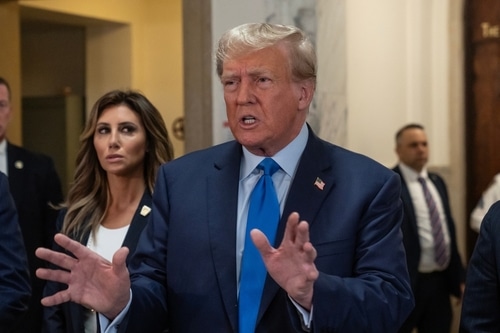Conservatives have long sought to reshape the federal government, and with the possibility of Donald Trump returning to the White House, their efforts may gain traction. Trump has articulated a vision that includes reducing the independence of key federal agencies, diminishing protections for civil servants, denying citizenship to certain individuals born in the U.S., and exerting more control over spending, potentially leading to the most significant government overhaul in recent history, according to legal scholars.
This agenda aligns with the objectives of influential conservative groups that have been working diligently to reform various aspects of the government, one agency at a time. Their aim is not only to reduce the government’s size but also to eliminate perceived opposition to the president’s agenda within the bureaucracy.
Russell Vought, former budget director for Trump and current president of the conservative Center for Renewing America, sees this as an opportunity to challenge the “deep state” and the administrative state that has operated with their own agendas for years.
In practical terms, this entails weakening 19th-century measures that transformed federal employment from a partisan spoils system into a professional workforce and revisiting federal laws meant to insulate some policy-making and enforcement areas from political influence.
This effort is rooted in the unitary executive principle, which stems from a constitutional clause vesting “the executive power” in the president. Conservative leaders argue that this clause grants the president extensive authority over the executive branch.
The conservative majority in the Supreme Court bolstered during Trump’s presidency, could play a decisive role in advancing these proposals. Conservative justices have shown support for the unitary executive principle and skepticism toward federal agencies, potentially aligning with Trump’s desire to rein in the federal bureaucracy.
Despite some setbacks during his first term, Trump could face a more favorable Supreme Court if reelected in 2024. Still, challenges remain, as some of Trump’s own appointees have diverged from conservative objectives, and lawmakers from both parties may resist efforts to strengthen the president’s impoundment authority.
Critics are concerned that an emboldened Trump might push legal boundaries, potentially surrounding himself with advisors unwilling to challenge his impulses. This could lead to weak legal arguments and court failures, setting problematic precedents for future administrations.
While Trump’s attempts to end birthright citizenship and restore his impoundment authority may face legal hurdles, the Supreme Court may be more receptive to increasing presidential control over independent agencies and reducing protections for civil servants.
Trump’s advisers aim to expand the president’s authority to hire and fire career federal employees, effectively allowing the selection of those who implement presidential policies throughout the government. They plan to revisit an executive order from 2020 that sought to strip federal employees of civil service protections.
The conservative majority on the Supreme Court may be willing to consider challenges to current precedent, potentially granting the president more authority to replace members of independent commissions at will.
Conservative officials argue that they aim to restore a constitutional vision of the presidency, where agencies are considered extensions of the president, and their employees serve at the president’s discretion.
Joe Biden has criticized Trump’s efforts to expand presidential power, framing it as a threat to democratic institutions. Democrats in Congress may investigate Trump’s actions if he secures a second term, but passing legislation countering his policies with a veto-proof majority would be challenging.
Despite decades of conservative efforts to reduce the government’s size, federal spending has continued to rise, and the federal workforce has remained relatively stable. During Trump’s tenure, annual deficits increased as bipartisan budget agreements boosted federal spending. Conservatives’ efforts to reform the government date back to the establishment of the Grace
Commission in 1982 under President Ronald Reagan. The commission aimed to improve government efficiency but faced challenges in implementing its recommendations, reflecting the inherent incentives within the government for increased spending and intervention.









